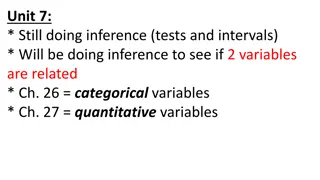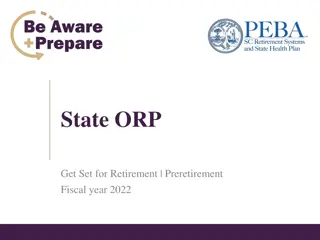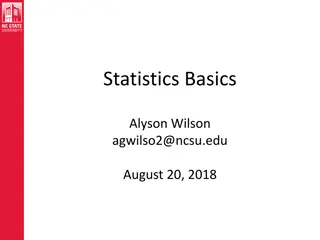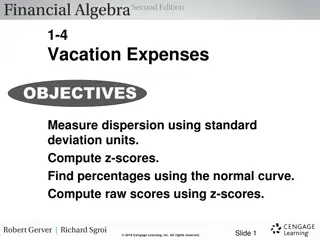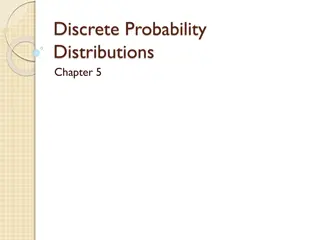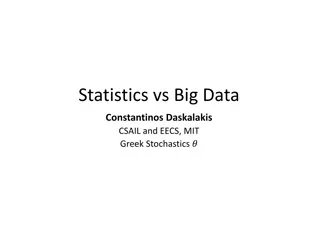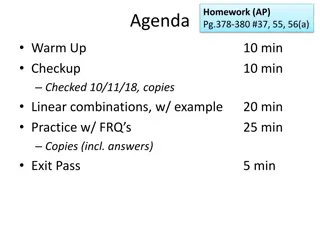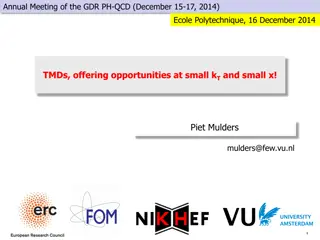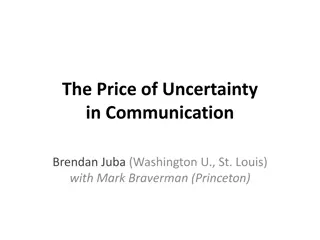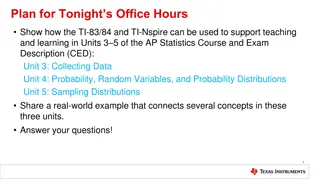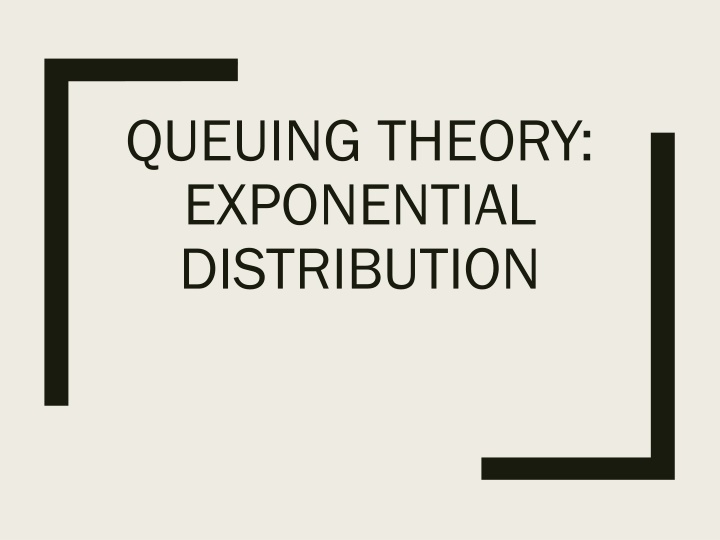
Queuing Theory and Random Variables in Traffic Modeling
Learn about queuing theory, exponential distribution, random variables, and Markovian property in the context of traffic modeling. Explore how these concepts help describe and analyze traffic flow, arrival rates, and event probabilities.
Uploaded on | 2 Views
Download Presentation

Please find below an Image/Link to download the presentation.
The content on the website is provided AS IS for your information and personal use only. It may not be sold, licensed, or shared on other websites without obtaining consent from the author. If you encounter any issues during the download, it is possible that the publisher has removed the file from their server.
You are allowed to download the files provided on this website for personal or commercial use, subject to the condition that they are used lawfully. All files are the property of their respective owners.
The content on the website is provided AS IS for your information and personal use only. It may not be sold, licensed, or shared on other websites without obtaining consent from the author.
E N D
Presentation Transcript
QUEUING THEORY: EXPONENTIAL DISTRIBUTION
Describing traffic How can we describe traffic? Cars, pedestrian, internet, etc. Also: how can we describe how traffic is processed? What are some metrics? Rate at which people arrive somewhere, e.g. customer arrival rate per hour Average downtime Time between people arriving In Queuing Theory, we use stochastic systems to model events Probability of an event occurring (counts) Always over a period of time (continuous)
Random Variables Randomness can be described as unpredictable in the short term, but predictable in the long term -Prof. Pruim, (pronounced prime ) Meneely s favorite Math Professor Random Variables are a mathematical construct used to abstract away a complex system that behaves stochastically Represent the complex physics of rolling a die with 1 variable Flipping a coin Random variables can be discrete or continuous e.g. flipping a coin Random variables are described by distributions
Distributions You Might Know Most distributions have at least one parameter define the whole distribution Every distribution has an input Uniform distribution Parameter: n (number of sides on the die) Can be discrete or continuous Fair die, e.g. f6(x=1) is 1/6 Binomial distribution Discrete Parameter: p (probability of an event) Input: number of events Normal distribution Parameters: mean, variance Input: a continuous variable Or, you can define them piecewise, e.g. unfair die
Poisson Process A type of random variable that models arrival events Each event is independently and identically distributed In Queuing Theory, we define it along the real number line to model the series of incoming events over time Poisson processes can be described by the Poisson distribution But! We won t be using that distribution very much, because we need another property
Markovian Property A type of stochastic system that is memoryless A 60% i.e. The probability of an event is ONLY based on the current state, and not the prior state Markov chains exhibit this Traffic of various kinds also exhibits this too 40% 70% 20% C B Stated mathematically: ? ? > ? + ? | ? > ? = ? ? > ? The probability of X at time s after t given that X is past t is the same as the probability of X after t 80% 30% Markov chain This is often a good assumption to fit performance data
Exponential Distribution A memoryless distribution, i.e. Markovian. Continuous distribution time is a continuous variable Describes the time between events in a Poisson process, i.e. inter-arrival times One parameter: or rate e.g. we get a 2 customers per hour is =2 Mean: 1/ e.g. the average time between customers is hr
Coffee Shop Example Suppose we have a coffee shop that, on average, takes 5 minutes to process a customer Mean: 1/ = 5 (minutes per customer) Thus: = 1/5 customers per minute (c/m) This is the rate, because it s a speed. (keep this example in mind)
Exponential PDF Probability distribution function of time x for mean : ? ? = ? ? (for x>0) E.g. Coffee Shop = 1/5 c/m What is the probability that a customer will spend EXACTLY 10 minutes? ? 10 = (1/5)? 10/5= 2.7% (for x>0) not all that useful by itself. We usually want ranges. Time to integrate!
Exponential CDF Cumulative Probability Distribution function: ? ? ? ?? = 1 ? ? (x>=0) ? ? = E.g. Coffee Shop = 1/5 c/m What is the probability that a customer will spend AT MOST 10 minutes? ? 10 = 1 ? 10/5= 86.4% (for x>0) What is the probability that a customer waits AT LEAST 3 minutes? 1 ? 3 = 1 (1 ? 3 5) = ? 3 1 1 1.82212= 54.8% (for x>0) 5= 6= 3 ?
A Note About Units Beware of units! Always make sure you convert your units into what the question is asking for. Use fraction chaining to cancel the units out: e.g. 5mph ft/hr 5 ????? 1 ??? 5280?? 1 ????=5280 5 ????? ???? 1 ??? ????? =26400 ???? 1 ??? e.g. a coffee shop that, on average, takes 5 minutes to process a customer Minutes/Customer? 5 Customers/Minute? 1/5 Customers/Hour? 60/5 = 12
Memorylessness in Math Back to Markovian processes Memorylessness formula: ? ? > ? + ? | ? > ? = ?(? > ?) E.g. Coffee Shop = 1/5 c/m What is the probability that a customer waits AT LEAST 3 minutes? (from prior slide) 1 ? 3 =? 3/5= 54.8% (for x>0) What is the probability that a customer will spend more than 10 minutes given that she has already waited 7 minutes? P(X>10 | X > 7) = P(X>7+3 | X>7) = P(X>3) = 54.8% (from above)
Lets work on some problems Go to myCourses and check out Queuing Theory Distributions Feel free to work with your neighbors on this, but! Each quiz question will have different inputs, so You will need to fill out your own answers. These kinds of questions will be on the first exam. You will get plenty of time to work on these questions in class as we go through Queuing Theory



